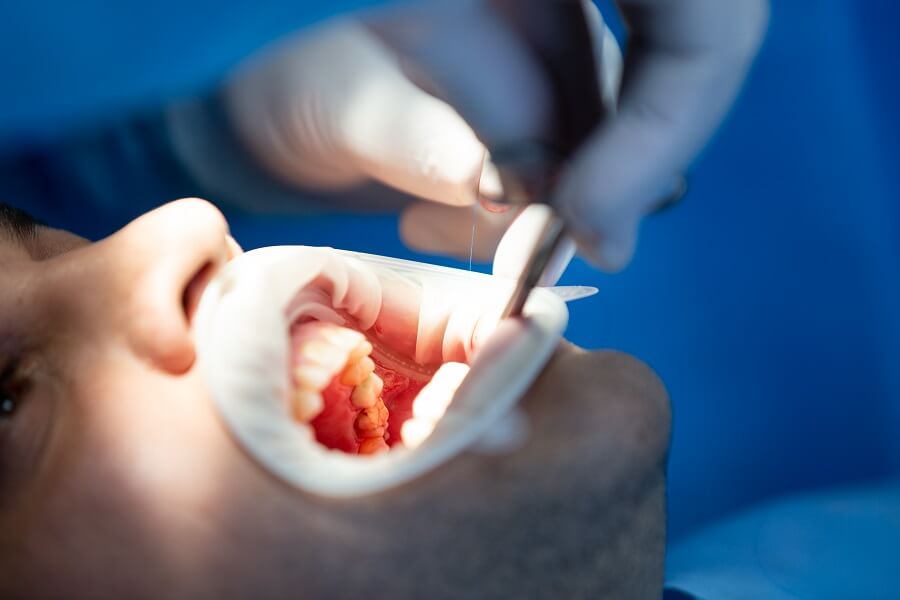What to Expect During a Wisdom Tooth Extraction?
Wisdom tooth extraction is a common dental procedure that many people undergo at some point in their lives. These third molars, also known as wisdom teeth, often cause problems such as pain, impaction, or crowding, necessitating their removal. If you’re scheduled for a wisdom tooth extraction or considering one, it’s natural to have questions and concerns about the procedure. In this blog, we’ll provide a comprehensive guide on what to expect during a wisdom tooth extraction to help ease your anxiety and ensure a smoother experience.
Preparing for the Procedure
Before the extraction, you’ll typically have a consultation with your oral surgeon or dentist. During this appointment, your dental professional will review your medical history, discuss the procedure, and address any questions or concerns you may have. They will also explain the different types of anesthesia options available, including local anesthesia, sedation, or general anesthesia, and help you choose the most suitable one based on your comfort level and the complexity of the extraction.
The Day of the Extraction
On the day of the extraction, here’s what you can expect:
a. Arrival and Check-in:
You’ll be asked to arrive at the dental office or surgical center at your appointed time. Make sure to follow any preoperative fasting instructions if you’re receiving sedation or general anesthesia.
b. Anesthesia Administration:
Depending on your choice and the recommendation of your oral surgeon, you’ll receive the appropriate anesthesia. Local anesthesia numbs the area around the tooth, sedation makes you relaxed and drowsy but still awake, while general anesthesia puts you to sleep during the procedure.
Process of Wisdom Tooth Extraction
The extraction itself involves several steps:
a. Incision:
The oral surgeon will make an incision in the gum tissue to access the wisdom tooth.
b. Bone Removal:
If necessary, the surgeon may need to remove a small portion of the bone that covers the tooth.
c. Tooth Removal:
The tooth is carefully loosened and then extracted. In some cases, the tooth may need to be divided into smaller pieces for easier removal.
d. Stitching:
After the tooth is removed, the surgeon will close the incision with dissolvable stitches.
Post-Extraction Care
After the procedure, you’ll be moved to a recovery area where you will be monitored until you are fully awake and able to leave. Here’s what to expect during the recovery period:
a. Pain and Discomfort:
You can expect some pain and swelling after the extraction. Your oral surgeon will provide pain medication and specific instructions on how to manage discomfort.
b. Bleeding:
There may be some bleeding from the extraction site initially. You’ll be given gauze pads to bite down on to help control bleeding.
c. Swelling:
Swelling is common after wisdom tooth extraction and can last for a few days. Applying ice packs to the affected area can help reduce swelling.
d. Eating and Drinking:
You’ll need to stick to a soft diet for a few days to allow the extraction site to heal. Avoid hot, spicy, and hard foods during this time.
e. Oral Hygiene:
Proper oral hygiene is crucial to prevent infection. Your oral surgeon will provide instructions on how to care for the extraction site and when to resume brushing and flossing.
Follow-Up Appointment
You’ll likely have a follow-up appointment with a dentist in Castlehills to monitor your healing progress. During this visit, any remaining stitches will be removed, and your dental professional will ensure that you’re healing as expected.
A wisdom tooth extraction may seem daunting, but with proper preparation and understanding of the process, it can be a relatively straightforward and pain-free procedure. Remember to communicate openly with your oral surgeon or dentist in The Colony, ask questions, and follow their post-operative care instructions diligently. In most cases, the discomfort and inconvenience associated with wisdom tooth problems are far greater than the temporary discomfort of the extraction itself. After the extraction and healing process, you’ll likely experience relief from any pain or issues caused by your wisdom teeth, and you can continue to enjoy a healthy and comfortable smile.





 |
|